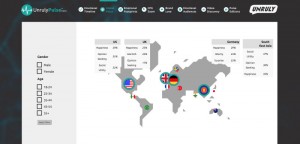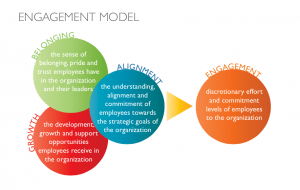
Want to stand out at your next client meeting? Ditch the same old PowerPoint presentation and deploy creative, personalized messaging instead.
The other day, one of the newer members of our sales team came into my office, asking for advice regarding an upcoming trip. “Hey Ken, I’m visiting Chicago next week for a major client meeting. Would you help me prepare a PowerPoint?” I smiled and said, “Sure, we can do that. Do you also want to bring them a box of doughnuts or bagels, kind of like a typical sales rep that makes the rounds?” She looked confused, until I continued: “Or do you want to stand out, hold that room, and really connect with people?” She nodded, and we went to work.
Admittedly, she was a bit uncomfortable at first, but she took my advice to heart and worked hard to put it into practice. After she met with the client, she called me, elated. “Nailed it,” was all she said. “Thank you so much.”
I’m now going to share with you the suggestions I gave her, and I want to note that they’re tactics that many of the best business leaders use everyday to nail every meeting and leave a lasting, positive impression on clients:
1. Avoid PowerPoint
It’s no secret that PowerPoint has historically been the most common platform used for business presentations. No matter your industry, you’ve probably seen dozens, if not hundreds, of the same old slideshow. Not only is it easy for your message to get buried in a typical PowerPoint presentation, but it’s also easy to lose the attention of your audience if it looks like something they’ve seen before.
Instead, find new and creative ways to engage with the group—create a dialogue rather than a monologue. Storytelling is an especially effective tool according to the Harvard Business Review. After all, we’ve been telling stories for thousands of years. Additionally, asking your clients questions about their lives outside the business world is a great way to connect in a meaningful way while beefing up your CRM and RBEs (relationship building extras).
2. Don’t Bring Bagels or Doughnuts
While bagels and doughnuts are undeniably tasty, they share something in common with a PowerPoint presentation: they’re overdone.
Dare to be original. Bring treats or drinks that are tailored to those specific clients on that specific day. If it’s a hot afternoon, for example, bring Popsicles. If it’s cold, shoot for hot chocolate and apple cider. The point here is to personalize the meeting as much as possible, thereby communicating to your clients that this is not just another sales pitch, and that you value their time. It shows that you’ve thought out every detail, from the snacks to your core message.
3. Be Authentic
Experienced business people are pros at picking out the inauthentic, the trite, and the fake. This means you have to stay true not only to yourself as an individual, but also to your business and what it stands for. Don’t make the meeting about you. By definition, partnerships are collaborative, so ask thoughtful questions, displaying a genuine interest in helping solve your client’s problems. The more you ask, the more you’ll learn. In turn, this helps you become the best possible partner to their business.
4. Prepare, Prepare, Prepare
Just because you aren’t creating a slideshow doesn’t mean you’re off the hook when it comes to preparing for a client meeting. In fact, without the slides, all eyes are on you and you alone, so it’s essential that you’re ready to step up. There’s nothing more painful than sitting through an ill-prepared or poorly improvised presentation, so put in the work beforehand, come up with a plan, and practice.
This doesn’t mean you need to develop a script—in fact, making adjustments as your presentation progresses is critical, according to Fast Company. But you need to have an extremely clear sense of what you’re going to say and how you’re going to say it. The more natural—and therefore authentic—you are during your presentation, the more powerful it will be for your audience.
5. Research Every Person in the Meeting
As part of your preparation, you need to do your research—and not just on the company and the benefits of a viable partnership. I’m talking about researching each and every person who will be in the meeting. Connect with them on LinkedIn, follow them on Twitter, and read anything they’ve published if it’s out there. Knowing something unique about the people you are going to meet will not only help you connect with them on a deeper level—it will also show that you’ve done your homework and that you’re committed to the partnership.
6. Don’t Sell
Again, don’t make the meeting about you or your company. They have access to the internet, so they already know what they need to know (otherwise, you wouldn’t be in their conference room). Instead, become a consultative partner—show them that yours is a collaborative relationship, not a transactional one.
Business & Finance Articles on Business 2 Community(43)
Report Post







